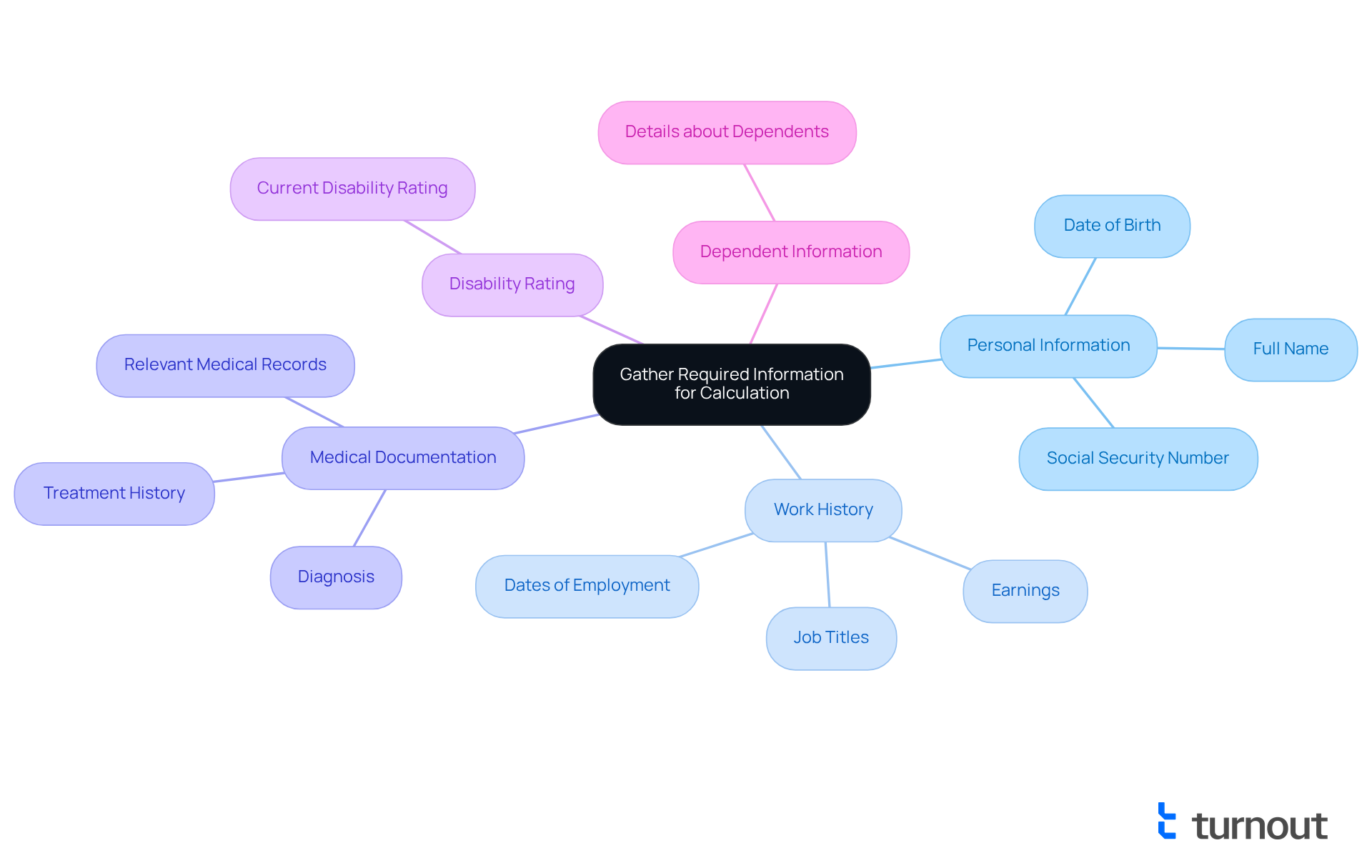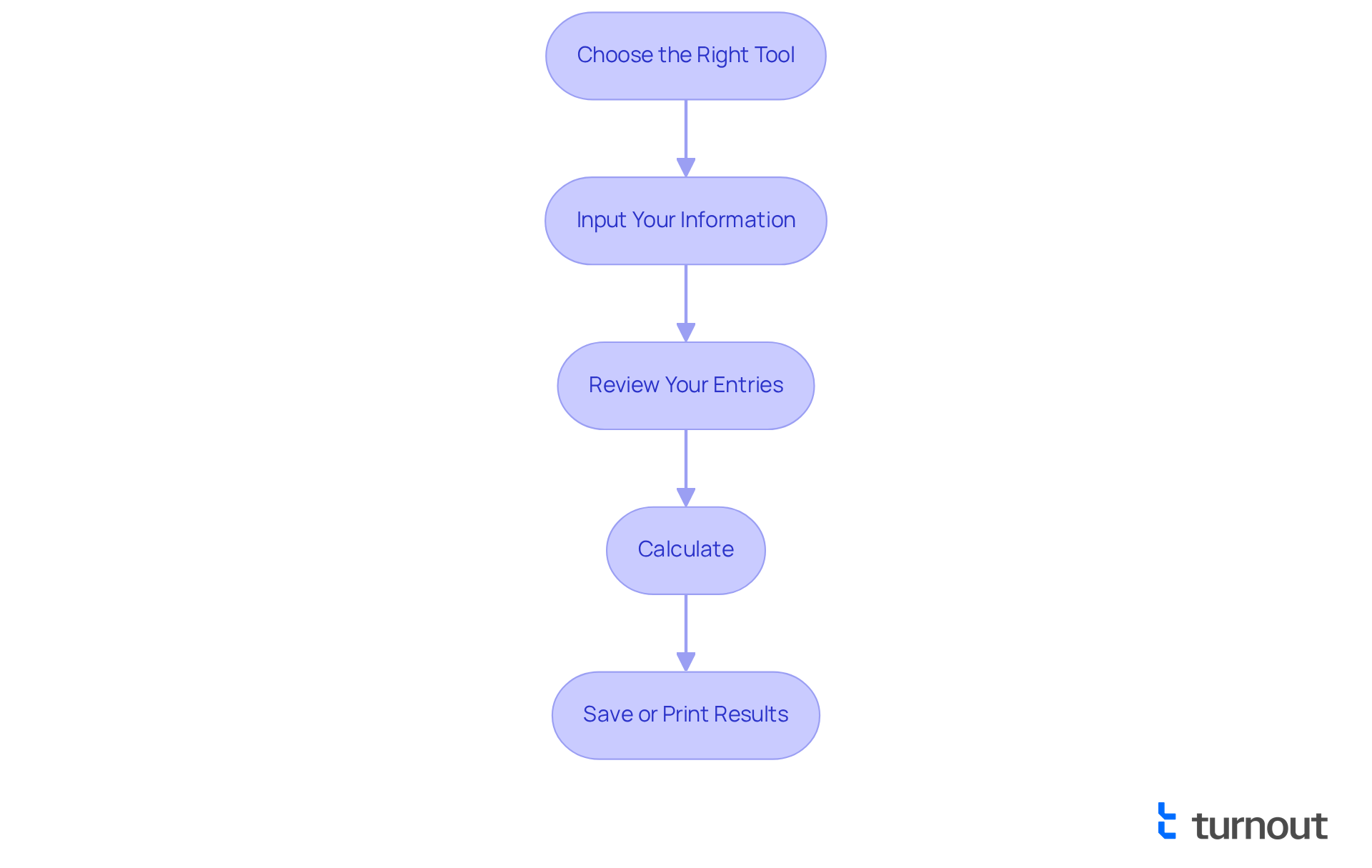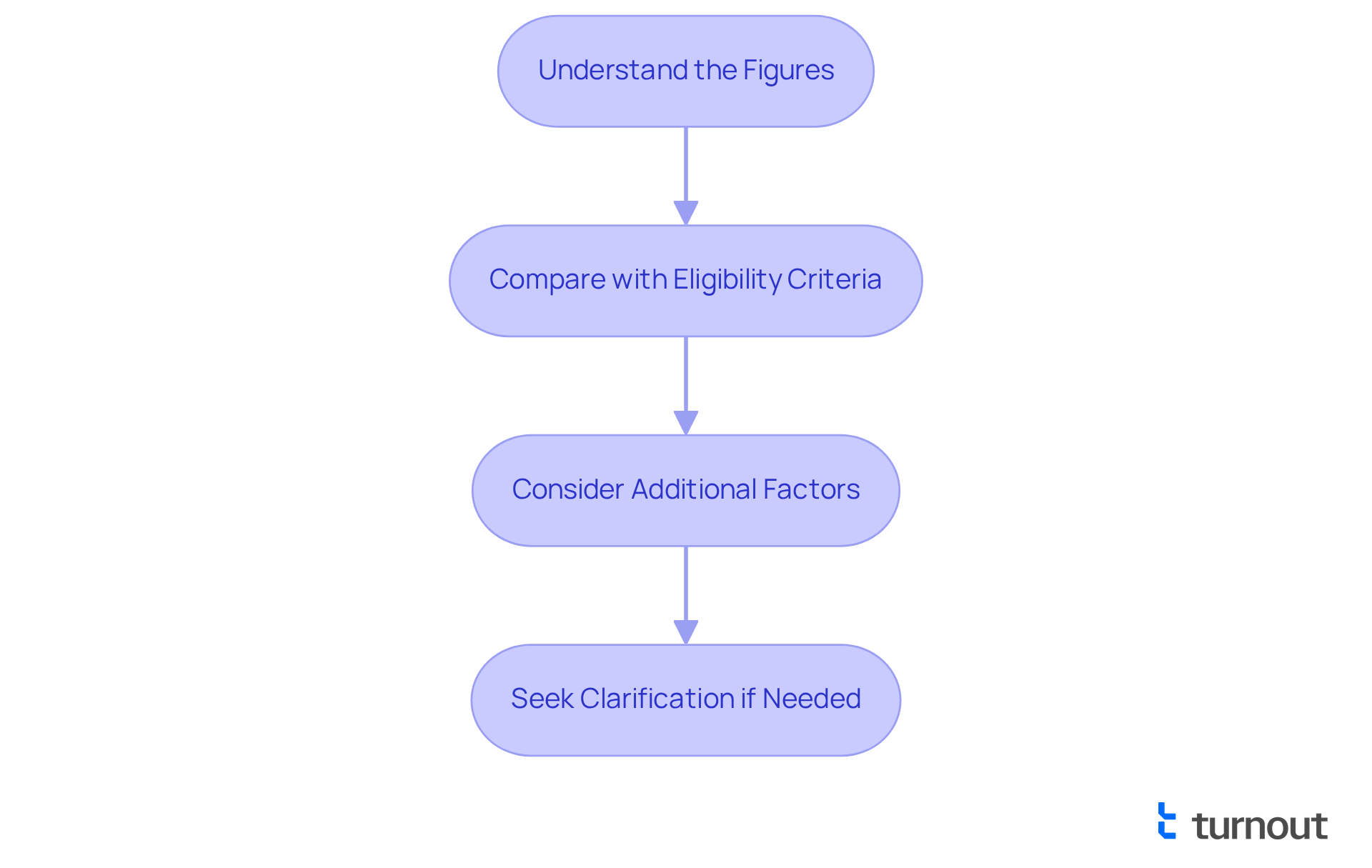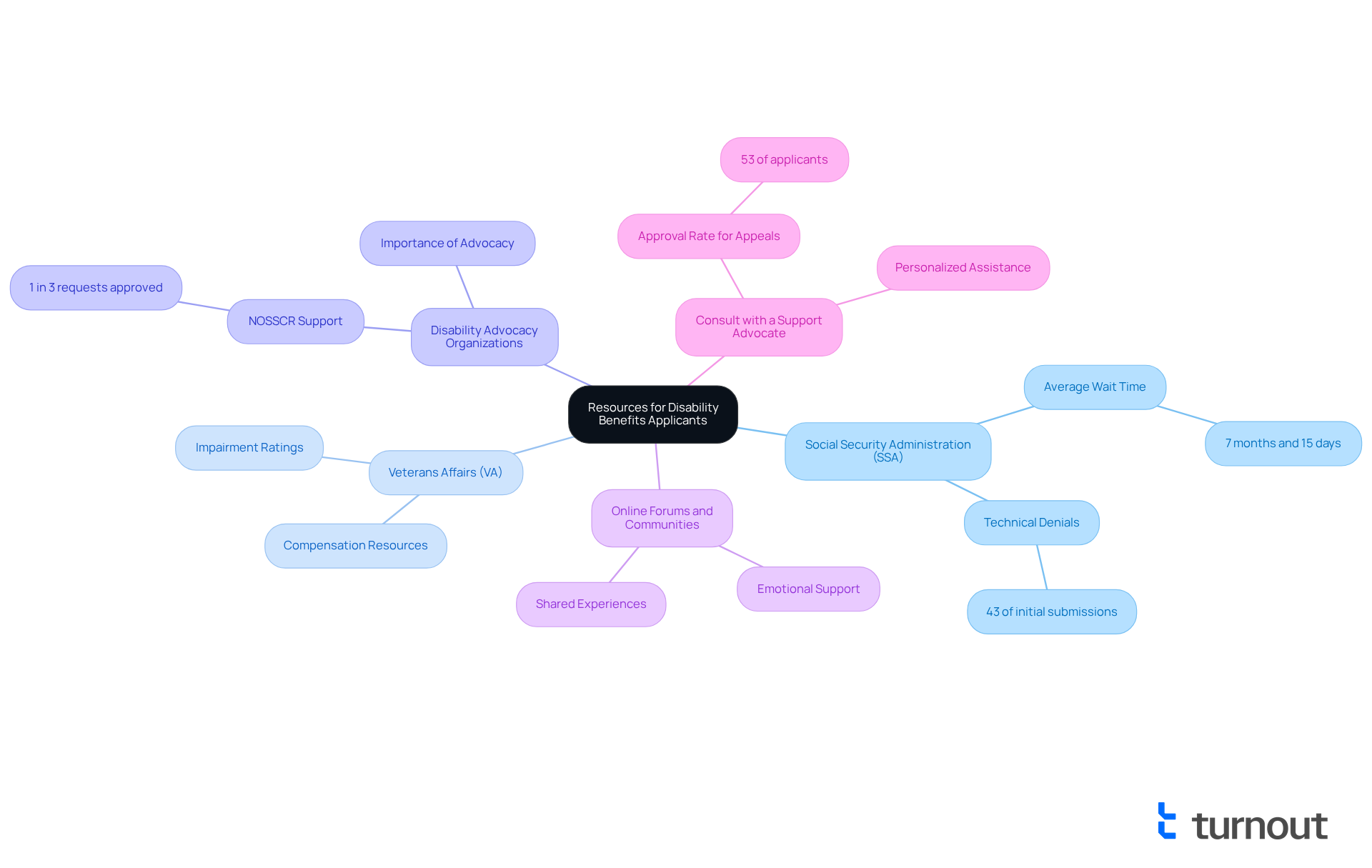Overview
Navigating the world of disability support can be overwhelming. We understand that finding the right tools to help you is essential. This article outlines five essential steps for effectively using a disability calculator:
- First, it's important to understand the purpose of this tool.
- Next, gather the necessary information that will guide you through the process.
- Following specific usage steps is crucial.
- You'll want to interpret the results accurately to ensure you grasp the potential benefits available to you.
- Finally, exploring additional resources can further assist you in this journey.
Remember, these steps are vital for estimating potential benefits and navigating the application process.
We're here to help you make informed financial decisions related to disability support. You are not alone in this journey, and taking these steps can empower you to seek the assistance you deserve.
Introduction
Navigating the complexities of financial assistance can often feel overwhelming, especially for those seeking disability benefits. We understand that this journey can be filled with uncertainty and questions. Disability calculators can serve as invaluable tools, designed to help you estimate potential support based on critical factors like your earnings and medical history. By learning how to effectively utilize these calculators, you can gain clarity on your eligibility and potential benefits.
However, it's common to feel concerned when the results don't align with your expectations. This article will guide you through essential steps to maximize the use of disability calculators, ensuring you are well-prepared for the journey ahead. Remember, you are not alone in this process—we're here to help.
Understand the Purpose of Disability Calculators
We understand that navigating financial assistance can be overwhelming. Assistance tools, including a disability calculator, are designed to help you estimate potential benefits based on important factors like earnings, impairment rating, and employment history. These tools serve as a helpful first step in understanding what financial support you might expect when applying for benefits.
By entering relevant information into the disability calculator, you can uncover insights regarding your eligibility and the potential amount you may receive. This knowledge can be invaluable for your financial planning and decision-making. Remember, grasping this aim is crucial for effectively using these tools throughout the application process.
You're not alone in this journey. We're here to help you make informed choices and explore the support available to you.

Gather Required Information for Calculation
Before using a disability calculator, it's crucial to gather all the necessary information. We understand that this process can feel overwhelming, but having everything ready can make a significant difference. Here’s what you should prepare:
- Personal Information: Your full name, date of birth, and Social Security number.
- Work History: Details about your employment history, including job titles, dates of employment, and earnings.
- Medical Documentation: Information regarding your condition, such as diagnosis, treatment history, and any relevant medical records.
- Disability Rating: If applicable, your current disability rating from the VA or Social Security Administration.
- Dependent Information: Details about any dependents, as this may affect benefit calculations.
Having this information organized will simplify the process and ensure that the calculator provides accurate estimates. Remember, you are not alone in this journey, and we’re here to help you every step of the way.

Follow the Steps to Use the Disability Calculator
We understand that using a disability calculator can feel overwhelming, but we're here to guide you through the process with care. Follow these steps to make the experience smoother:
- Choose the Right Tool: It's important to select a device that fits your specific needs. Whether it's for Social Security Disability Insurance (SSDI), Veterans Affairs (VA), or other programs, using a disability calculator can make all the difference.
- Input Your Information: Take a moment to enter your collected data into the computation tool. Remember, accuracy is key to getting the best estimate possible.
- Review Your Entries: Before you move forward, double-check all your inputs for any errors or omissions. It’s common to miss something, so take your time.
- Calculate: Once you're ready, click the calculate button to see your estimated benefits.
- Save or Print Results: After obtaining your results, save or print them for your records. This will help you keep track of important information for future reference.
By following these steps, you can confidently navigate the disability calculator and obtain useful estimates. Remember, you are not alone in this journey, and we are here to help you every step of the way.

Interpret Your Calculator Results Effectively
Once you receive your results from the disability calculator, it's crucial to interpret them accurately. We understand that this can be a challenging process, so let’s break it down together:
- Understand the Figures: The output will typically include estimated monthly benefits and may also show annual totals. Familiarize yourself with these figures to gain clarity on what they mean for you.
- Compare with Eligibility Criteria: It’s essential to check how your estimated advantages align with the eligibility criteria for the specific program you are applying for. This step, especially utilizing a disability calculator, can help you feel more prepared.
- Consider Additional Factors: Remember that the calculator provides estimates based on the information you entered. Factors such as variations in income, extra dependents, or changes in impairment status can influence your actual benefits. It’s common to feel uncertain about these elements, but you’re not alone in this.
- Seek Clarification if Needed: If the results are unclear, consider consulting with an advocate for assistance. We’re here to help you navigate this process, and using additional resources can enhance your understanding.

Explore Additional Resources and Tools for Applicants
To enhance your journey toward obtaining disability benefits, we understand that utilizing a disability calculator can be challenging. Consider utilizing the following resources:
- Social Security Administration (SSA): The SSA website offers extensive information on disability benefits, eligibility criteria, and application processes. As of November 2023, the average wait time for a decision on claims for support was 7 months and 15 days. This highlights the difficulties individuals face, especially since 43% of initial submissions resulted in technical denials.
- Veterans Affairs (VA): For our veterans, the VA provides resources specific to impairment ratings and compensation, ensuring that those who have served receive the benefits they deserve.
- Disability Advocacy Organizations: Organizations like the National Organization of Social Security Claimants' Representatives (NOSSCR) offer guidance and support, helping applicants navigate the complexities of the system. Significantly, approximately one in three processed requests for assistance were approved in 2022. This underscores the importance of advocacy. Remember, around half of applicants at the initial stage appealed their denial, emphasizing the value of having support.
- Online Forums and Communities: Engaging with others facing similar challenges can provide valuable perspectives and emotional support, fostering a sense of belonging throughout the submission process.
- Consult with a Support Advocate: For personalized assistance, reaching out to a support services advocate can provide tailored guidance. With 53% of applicants who appeal initial decisions ultimately approved, having expert support can significantly improve your chances. Turnout's AI case quarterback, Jake, is here to assist in managing the application process, ensuring that you stay informed and organized.
Leveraging these resources can deepen your understanding and enhance your ability to successfully navigate the disability benefits system using a disability calculator. Remember, you are not alone in this journey, and we are here to help.

Conclusion
Utilizing a disability calculator can truly transform your understanding of potential financial benefits. These tools are designed to clarify eligibility and estimated support, empowering you to make informed decisions about your financial future. We understand that navigating the complex landscape of disability benefits can be daunting, but by grasping the purpose and functionality of these calculators, you can approach this journey with greater confidence.
This article has outlined essential steps for effectively using a disability calculator:
- Gathering necessary information
- Following a structured process
- Interpreting results accurately
- Exploring additional resources
Each step is vital for ensuring that you maximize the benefits you may be entitled to receive. By recognizing the importance of accurate data entry and the value of advocacy and support organizations, you have a roadmap to guide you through the application process.
Remember, you do not have to undertake the journey toward obtaining disability benefits alone. Engaging with available resources, seeking support from advocates, and utilizing tools like disability calculators can significantly enhance your chances of a successful application. By taking proactive steps and leveraging the right information, you can navigate this process more effectively and secure the support you deserve. You're not alone in this journey; we're here to help.
Frequently Asked Questions
What is the purpose of a disability calculator?
A disability calculator helps estimate potential financial benefits based on factors like earnings, impairment rating, and employment history. It serves as a useful tool to understand eligibility and potential support when applying for benefits.
How can a disability calculator assist in financial planning?
By entering relevant information into the disability calculator, users can gain insights into their eligibility and the potential amount of benefits they may receive, which is valuable for financial planning and decision-making.
What information do I need to gather before using a disability calculator?
You should prepare the following information: personal details (full name, date of birth, Social Security number), work history (job titles, dates of employment, earnings), medical documentation (diagnosis, treatment history, medical records), disability rating (if applicable), and dependent information (details about any dependents).
Why is it important to have all required information organized?
Having all necessary information organized simplifies the process of using the disability calculator and ensures that it provides accurate estimates for potential benefits.
Is support available for individuals navigating the disability application process?
Yes, support is available to help individuals make informed choices and explore the financial assistance options available to them throughout the application process.




